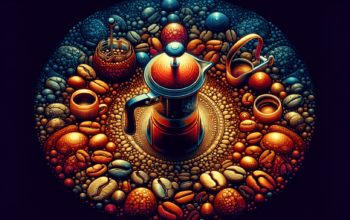Imagine waking up to the delightful aroma of freshly brewed coffee, a scent that instantly fills your senses with warmth and anticipation. As you take that first sip, you are greeted with a symphony of flavors dancing on your taste buds. From fruity and floral notes to hints of caramel and chocolate, coffee offers a rich and complex experience for connoisseurs and casual drinkers alike. In this article, we will explore the fascinating world of coffee flavors and aromas, uncovering the secrets behind what makes each cup unique and how to enhance your coffee-drinking experience. Get ready to embark on a journey of discovery and deepen your appreciation for the intricacies of this beloved beverage.
Coffee Flavor Basics
The Basics of Coffee Flavors
Coffee is so much more than just a way to wake up in the morning. It is a complex and intriguing beverage that offers a diverse range of flavors. Understanding coffee flavors can enhance your overall coffee experience and allow you to truly appreciate the nuances in each cup.
Taste vs Flavor
When talking about coffee, it is important to distinguish between taste and flavor. Taste refers to the basic senses of sweet, sour, salty, and bitter that we experience on our tongue. On the other hand, flavor encompasses a broader range of sensory experiences, including taste, aroma, and even texture. By focusing on both taste and flavor, you can fully engage your senses and unlock the true potential of coffee.
Factors Influencing Coffee Flavor
Numerous factors contribute to the flavor of coffee. The origin of the beans, the specific variety of the coffee plant, the altitude at which it is grown, the harvesting and processing methods, and even the roasting technique all play a role in shaping the ultimate taste that ends up in your cup. Understanding these factors can help you navigate the world of coffee flavors and make more informed choices when selecting your brew.
Identifying Coffee Flavors
The Flavor Wheel
To assist in identifying and describing coffee flavors, professionals in the industry have developed a tool known as the flavor wheel. This wheel categorizes various flavors into different sections, making it easier to pinpoint the specific notes present in a particular coffee. By familiarizing yourself with the flavor wheel, you can enhance your ability to identify and appreciate the different flavors found in your coffee.
Common Flavor Profiles
Coffee beans from different regions and with various processing methods often possess distinct flavor profiles. For example, beans from Central America might exhibit fruity and citrusy flavors, while beans from Africa might have floral and wine-like notes. By exploring these regional flavor profiles, you can discover new and exciting taste experiences and expand your coffee palate.
Language Techniques for Describing Flavors
Describing coffee flavors can be a delightful and enjoyable exercise. To effectively communicate your sensory experiences, it is helpful to utilize language techniques specifically designed for flavor description. Descriptive terms such as “bright,” “nutty,” “caramel,” and “earthy” help paint a vivid picture of the flavors present in your cup. By developing your flavor vocabulary, you can effortlessly convey your coffee experiences to others.
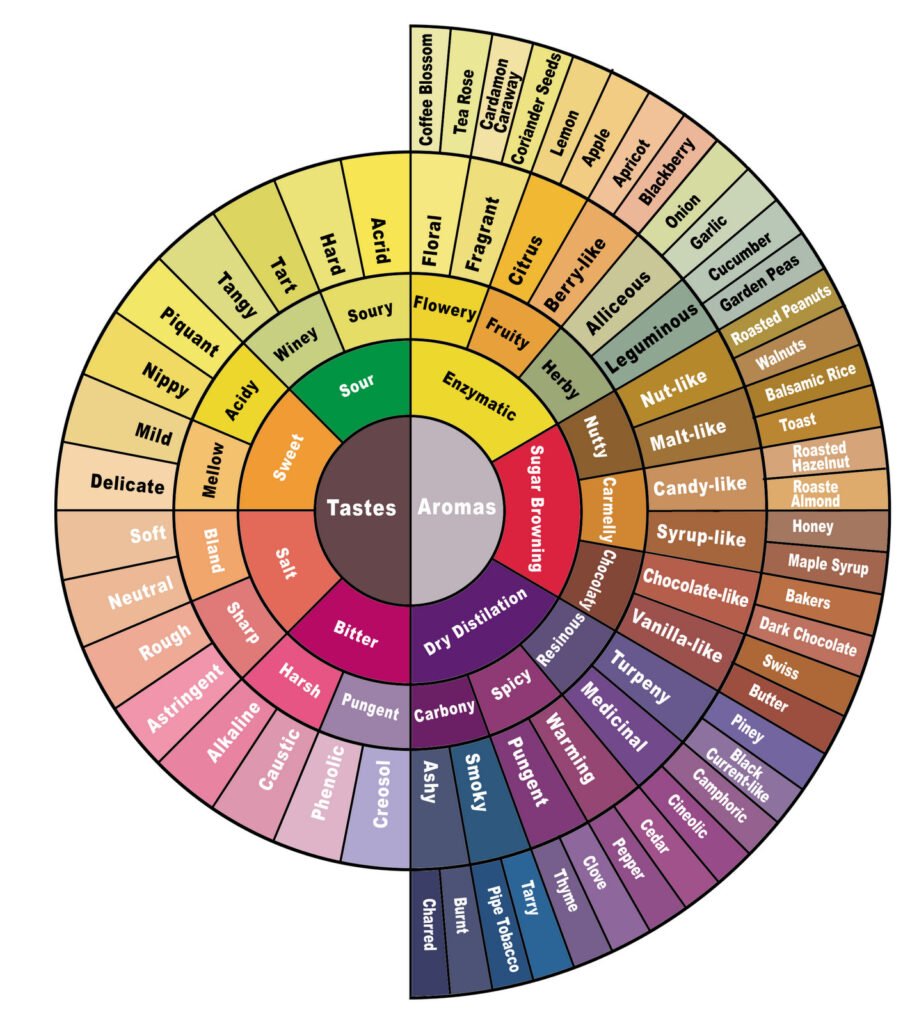
This image is property of images.squarespace-cdn.com.
Aromas in Coffee
The Importance of Aromas
Aromas play a crucial role in the overall coffee drinking experience. They create the first impression and can significantly impact how we perceive flavor. The aromatic compounds released during brewing are responsible for the enticing scents that waft from the cup, foreshadowing the flavors to come. Understanding and appreciating coffee aromas can deepen your enjoyment and heighten your sensory experience.
Primary Aromas in Coffee
Coffee possesses a wide array of primary aromas, each contributing to a unique and distinctive scent profile. These aromas can range from fruity and floral to chocolatey and nutty. By learning to identify and differentiate these primary aromas, you can engage more fully with your cup of coffee and discover new layers of aroma complexity.
Aroma Compounds
The mesmerizing aromas in coffee are created by a complex combination of volatile compounds. These compounds are developed during the roasting process and are released when coffee is brewed. The unique combination of aroma compounds contributes to the specific scent profile of each coffee. Some of the most prevalent aroma compounds include linalool, which produces a floral fragrance, and vanillin, which imparts a sweet vanilla scent. Familiarizing yourself with these aroma compounds can deepen your understanding and appreciation of coffee aromas.
Developing Your Palate
Tasting Techniques
Tasting coffee is an art form that requires practice and attention to detail. By utilizing specific tasting techniques, you can refine your palate and better identify the flavors and aromas in your coffee. These techniques involve slurping the coffee to aerate it and distribute it across your entire palate. The goal is to fully experience all the sensory elements and detect the nuances that may otherwise go unnoticed.
Tasting Exercises
To enhance your tasting abilities and develop a discerning palate, you can engage in tasting exercises. These exercises involve comparing different coffees side by side, noting the variations in flavor, aroma, and intensity. By deliberately focusing on the differences and similarities, you can train your palate to become more attuned to the subtleties of each coffee.
Building Flavor Vocabulary
Just like learning a new language, building a flavor vocabulary takes time and practice. As you explore different coffees and engage in tasting sessions, you will begin to identify recurring flavors and aromas. By actively seeking out and noting these flavors, you can expand your flavor vocabulary and develop a stronger ability to describe and appreciate the complexities of coffee.
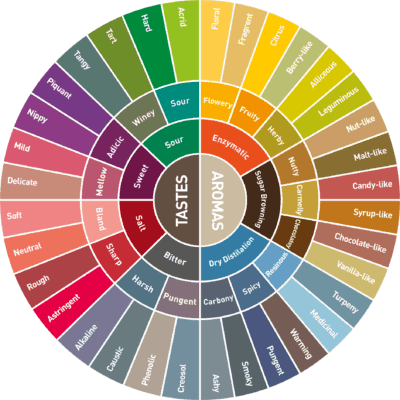
This image is property of www.coffee-spirit.maxicoffee.com.
Roasting and Flavors
Impact of Roasting on Flavor
The roasting process has a significant impact on the flavor of coffee. Roasting transforms the green, raw coffee beans into the aromatic and flavorful beans we know and love. The length and temperature of the roasting process determine the flavor profile, with lighter roasts tending to have more acidic and bright flavors, and darker roasts offering deeper and more robust characteristics. Understanding the impact of roasting on flavor helps you make educated decisions when choosing the roast level that aligns with your preferences.
Roast Levels and Their Effects
Different roast levels bring out different flavor nuances in coffee beans. Light roasts maintain the delicate and nuanced flavors of the beans, showcasing their origin and allowing for a distinct acidity and brightness. Medium roasts strike a balance between the origin flavors and the caramelization brought on by the roasting process, resulting in a more balanced cup. Dark roasts, on the other hand, bring out rich and bold flavors with charred and smoky undertones, often masking the original characteristics of the beans. Exploring the different roast levels can open up a world of diverse flavors and allow you to find your preferred taste profile.
Roast Profiles
Roasters often develop specific roast profiles to coax out the desired flavors from their beans. These profiles involve carefully controlling variables such as temperature, time, and heat application during the roasting process. By experimenting with different roast profiles, roasters can enhance certain flavors and create a unique and signature taste that sets their coffees apart. Understanding roast profiles can give you insight into the thought and craft that goes into each bag of coffee you purchase.
Brewing Methods and Flavor
Influence of Brewing Methods on Flavor
The brewing method you choose significantly impacts the flavor of your coffee. Different methods extract different compounds from the coffee grounds, resulting in varying flavor profiles. For example, a French press brew typically produces a full-bodied and robust cup with prominent flavors, while a pour-over method may emphasize the delicate nuances of the coffee. By exploring different brewing methods, you can tailor your coffee experience and bring out the flavors you love most.
Espresso vs Filter Coffee
Espresso and filter coffee represent two distinct brewing methods, each yielding unique flavors. Espresso, with its concentrated extraction process, produces a full-bodied, intense, and often complex cup. Filter coffee, on the other hand, offers a cleaner and more subtle flavor profile. The choice between espresso and filter coffee depends on personal preference and the desired flavor experience.
Experimenting with Brewing Variables
Within each brewing method, there are numerous variables that can be adjusted to alter the flavor of your coffee. Variables such as water temperature, extraction time, grind size, and coffee-to-water ratio all contribute to the final flavor. By experimenting with these variables, you can fine-tune your brewing process and actively control the flavor outcome, allowing for endless possibilities and personal customization.
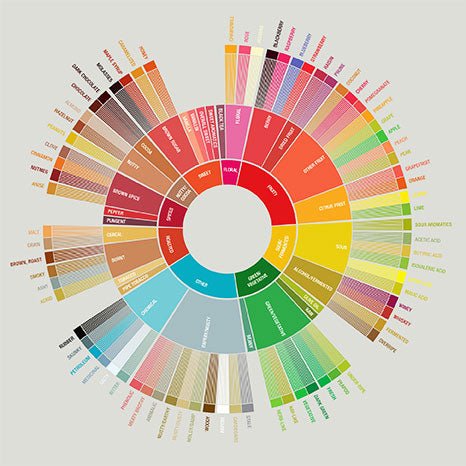
This image is property of cdn.shopify.com.
Origin and Terroir
Impact of Coffee Bean Origin
The origin of coffee beans plays a fundamental role in determining their flavor characteristics. Climate, soil composition, and altitude all influence the growth and development of the coffee plant, resulting in unique flavors. Beans from each country or region possess distinct flavor profiles, reflecting the terroir in which they were cultivated. Exploring different origins allows you to experience the diverse range of flavors and discover the geographical diversity within the world of coffee.
Terroir and Flavor
Terroir refers to the environmental factors that influence the character of a crop, including coffee. This concept encompasses the influence of soil, climate, and geography on the flavors present in the coffee beans. From the volcanic soils of Central America to the high-altitude regions of Ethiopia, terroir creates a connection between the land and the flavors that emerge in the coffee cup. Appreciating the impact of terroir on flavor adds another layer of depth and appreciation to your coffee experience.
Single Origin vs Blends
When it comes to coffee, you have the option to choose between single-origin beans and blends. Single-origin beans are sourced from a specific region or farm, offering a distinct flavor profile that reflects the unique characteristics of that particular location. Blends, on the other hand, combine beans from different origins to create a harmonious balance of flavors. Exploring both single-origin coffees and blends allows you to compare and contrast the flavor profiles, helping you find the perfect balance between complexity and consistency.
Flavor Enhancements
Flavored Coffees
While coffee itself offers a plethora of natural flavors, some people enjoy the addition of additional flavors. Flavored coffees are infused with various flavors, such as vanilla, caramel, or chocolate, creating a unique taste experience. These coffees can be a fun and indulgent option for those looking to explore different flavor combinations and add a touch of sweetness to their morning routine.
Flavor Syrups and Additives
If you prefer to customize your coffee flavors, flavor syrups and additives provide endless possibilities. Options such as vanilla, hazelnut, or cinnamon syrups can be added to your coffee to create a personalized flavor profile. Milk alternatives like almond or oat milk can also add a creamy texture and a hint of flavor. Experimenting with various syrups and additives allows you to transform your coffee into a unique and personalized beverage.
Pairing Coffee with Food
Just as wine is often enjoyed with food, coffee can also be paired with different culinary delights to enhance the overall sensory experience. The flavors and aromas of coffee can complement and elevate certain dishes, creating a harmonious taste sensation. For example, a fruity African coffee may pair well with a citrusy dessert, while a bold and chocolatey coffee could be the perfect accompaniment to a rich chocolate cake. Experimenting with coffee and food pairings can be a delightful adventure that brings out the best in both.
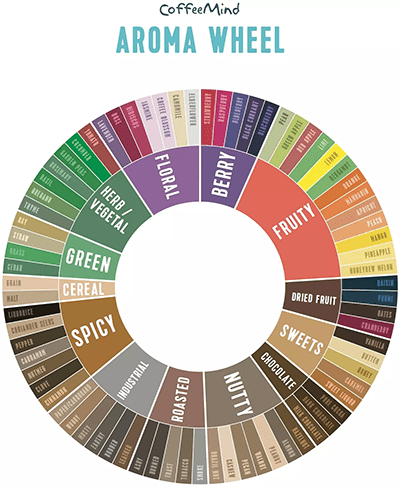
This image is property of www.abeandco.co.uk.
Quality and Specialty Coffee
Defining Specialty Coffee
Specialty coffee refers to coffee that is of exceptional quality and is crafted with meticulous attention to detail. These coffees are sourced from specific regions and farms, ensuring traceability and sustainable practices. Specialty coffee is often roasted to highlight the unique flavors of the beans and is served in specialty coffee shops that prioritize the art and science of brewing. By seeking out specialty coffee, you can experience the pinnacle of coffee quality and flavor.
Cupping and Evaluating Coffee
Cupping is a method used by coffee professionals to evaluate the quality and flavor profile of coffee beans. It involves smelling and slurping the coffee to assess its aroma, acidity, body, and aftertaste. Cupping allows for a focused and objective evaluation of coffee, providing valuable insights into its flavor characteristics. While cupping is typically performed by industry experts, individuals can also engage in this process to further enhance their understanding and appreciation of coffee.
Ethical and Sustainable Coffee
In addition to flavor and quality, many coffee enthusiasts also prioritize the ethical and sustainable aspects of the coffee they consume. Ethical coffee encompasses fair trade practices, ensuring that coffee farmers are paid fair wages for their labor. Sustainable coffee focuses on environmentally friendly production methods, such as organic farming and responsible water usage. By supporting ethical and sustainable coffee producers, you can enjoy your coffee with the knowledge that it has been produced with care and consideration for both people and the planet.
Personal Preference and Enjoyment
Finding Your Favorite Coffee
With the vast array of flavors and options available, finding your favorite coffee can be a delightful adventure. Exploring different origins, roast levels, and brewing methods allows you to discover the flavors and characteristics that resonate most with your taste buds. It is a journey of trial and error, but one that is ultimately rewarding when you find that perfect cup of coffee that brings a smile to your face.
Experimenting with Flavors
Coffee offers endless opportunities for experimentation and creativity. Whether it’s trying a new brewing method, exploring flavor combinations, or venturing into different origins, the world of coffee is a playground for flavor exploration. Embrace the curiosity within you and don’t be afraid to step outside your comfort zone. You may just stumble upon a flavor combination or brewing technique that surprises and delights you.
Creating Your Coffee Ritual
Coffee is not just a beverage; it is a ritual, a moment of quiet and reflection that you can savor each day. Creating a coffee ritual involves finding joy in the entire coffee experience, from selecting the beans to brewing the perfect cup. It’s about finding the perfect mug, setting aside a few moments each day to indulge in your coffee, and truly appreciating the flavors and aromas that dance on your palate. Your coffee ritual is personal to you, so make it a practice that brings you comfort and happiness.
Understanding coffee flavors and aromas takes time and patience, but the journey is one that will enrich your coffee experience. By delving into the fundamentals of flavors, learning to identify aromas, and experimenting with brewing methods, you can cultivate a deeper appreciation for the complexities that coffee has to offer. So, grab your favorite mug, take a deep breath, and embark on this delicious exploration of the world of coffee flavors and aromas!
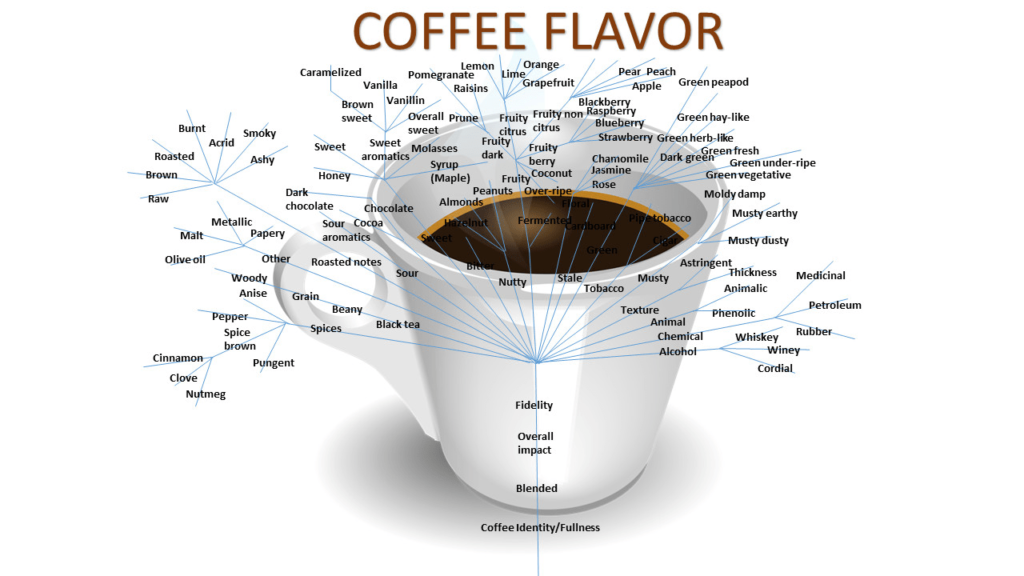
This image is property of pub.mdpi-res.com.


